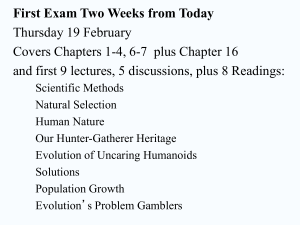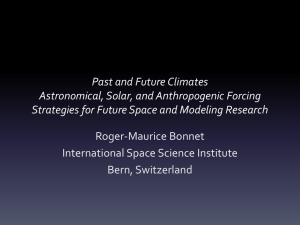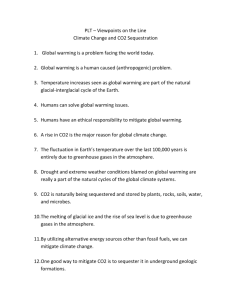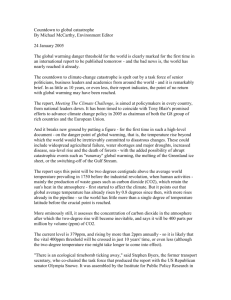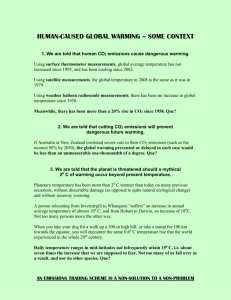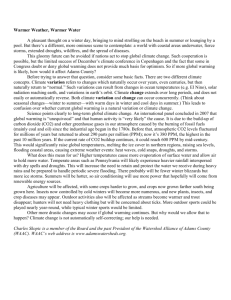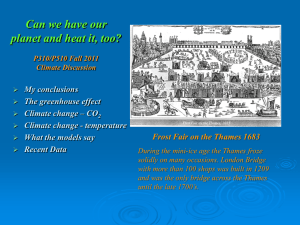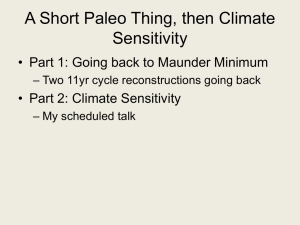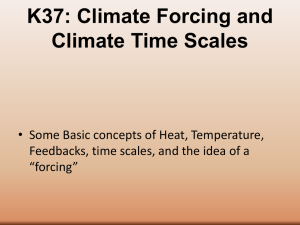Climate Change Presentation
advertisement
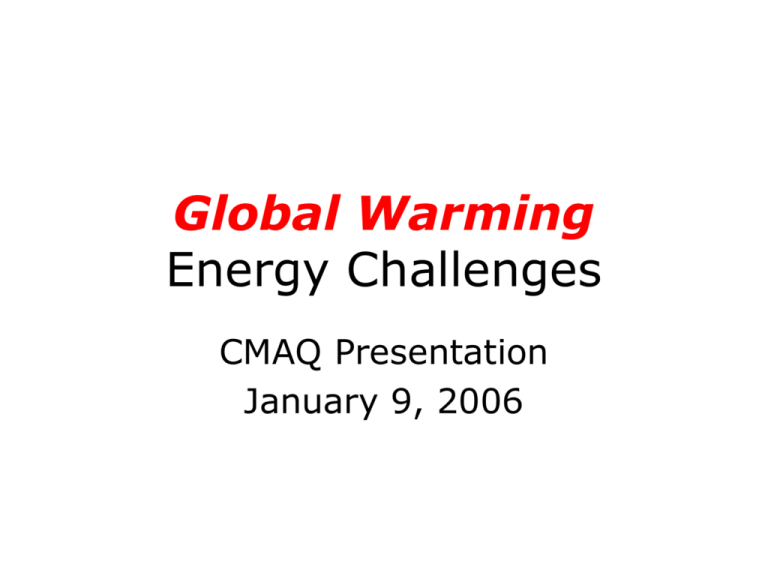
Global Warming Energy Challenges CMAQ Presentation January 9, 2006 Overview • Greenhouse effect – Historic carbon emissions / CO2 rise – Forcing models / temperature predictions • Effect of a warming earth (1 degree F) • Peak oil / Hubbert’s peak – Future and current energy challenges • Energy equity – the road ahead Solar Energy and earth’s Heat http://www.ncdc.noaa.gov/oa/climate/globalwarming.html http://www.grida.no/climate/vital/04.htm 250 yrs of Carbon Emissions It took 125 years to burn the first trillion barrels of oil – we’ll burn the next trillion in less than 30 years – why should you care? Rising CO2 over 50 Years http://earthguide.ucsd.edu/globalchange/keeling_curve/01.html Carbon Emissions and CO2 Year C burned 1900 12307 1910 19174 1920 28050 1930 37914 1940 48566 1950 62324 1960 83453 1970 115935 1980 164083 1990 219365 2000 283373 ppm CO2 295 300 305 310 310 315 320 325 340 350 370 • Carbon burned => CO2 • Linear from 1850 to 2000 - ppm CO2 =2.55 e10-4 *M tons C + 297 ppm (r2*100=99%) • ~ 50% of carbon goes into atmospheric CO2 – 33% into the oceans • Trend is constant over 150 years – is this how the biosphere will react over the next 150 years? A near perfect correlation that predicts ppm CO2 from total carbon burned Global Warming - the 20th Century http://www.mala.bc.ca/~earles/ipcc-tar-feb01.htm Earth Out of Balance http://www.giss.nasa.gov/research/news/20050428/ Forcing, Predicted Temperature, and Climate Lag, 2000 - 2100 5 4.5 4 3.5 3 2.5 2 1.5 1 0.5 0 Forcing Felt Owed 2000 0F 2025 2050 2075 2100 - Model built assuming ~60% of forcing is felt in ~25 years Consequences of Warming • Thinning of polar ice caps – Thawing permafrost / release of methane • Slowing of the thermohaline cycle • Rising sea level, perhaps quickly • Extreme weather events – Extended regions of drought – Extremes of temperature / duration – Extremes of storms and hurricanes All these are consequences of only one degree F for <50 years! The Melting North Pole The North Pole is thinning in area ~10% per decade, and thinning in thickness ~1 meter per decade. At these rates, it may be an open sea as early as 2030 – 2050. http://earthobservatory.nasa.gov/Study/ClimateClues/ Storms on the Move Katrina moving across Florida in late August 2005 finds warm water in the Gulf of Mexico And grows from a category 1 to a category 5 hurricane in less than 2 days! Peak Oil – ‘After the Crash’ http://www.lifeaftertheoilcrash.net/ Oil Production – Reserves Data from ‘The Inevitable Peaking of World Oil Production’, Hirsch, 2005 Projected Energy Demand http://www.enecho.meti.go.jp/english/energy/world/outlook.html Energy Equity • Burning oil is burning money! • Build an energy infrastructure with equity • Solar energy is primary, not alternative! – $25 billion economy for ‘million solar roofs’ – Every MW of solar energy creates 24 jobs in manufacturing, and 8 for local installers • Built in America, by Americans, for America, what could be more economic? http://www.solarelectricpower.org/ Summary • • • • • Greenhouse effect – carbon cycle Forcing models – temperature lag Effect of warming just one degree Peak oil – declining energy production Energy Equity – and the road ahead – Our single biggest challenge – Our single biggest opportunity References • • • • • • • • http://www.realclimate.org/ http://www.giss.nasa.gov/ http://www.sc.doe.gov/ober/CCRD/model.html http://www.nersc.gov/projects/gcm_data/ http://www.solarelectricpower.org/ http://www.nrel.gov/ http://www.eia.doe.gov/ http://en.wikipedia.org/wiki/Peak_oil
